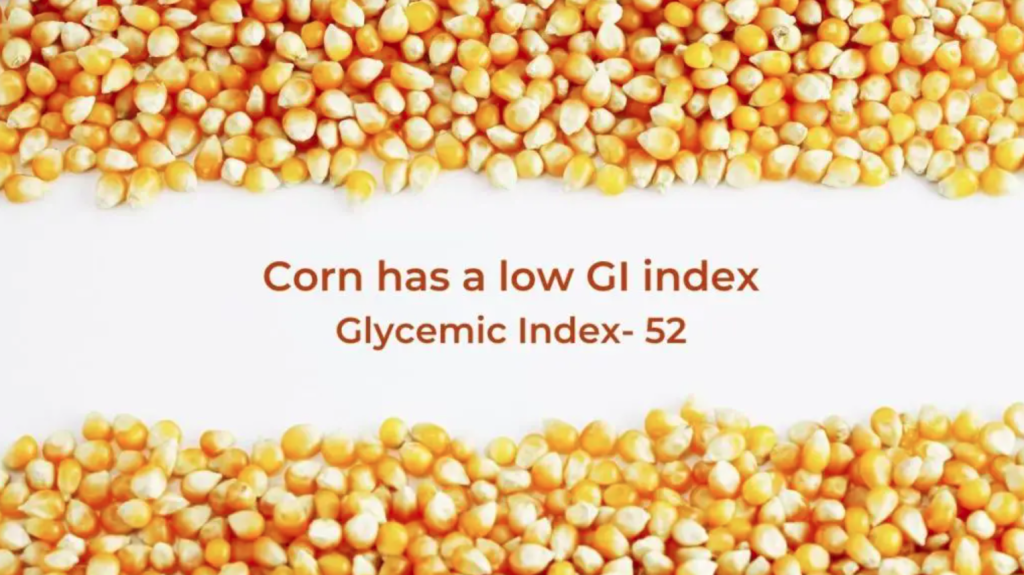The Truth Behind Corn Glycemic Index: Separating Fact from Fiction
When it comes to understanding the impact of carbohydrates on blood sugar levels, the glycemic index (GI) plays a crucial role. The GI is a scale that measures how quickly and significantly a particular food raises blood glucose levels. It is an important tool for managing blood sugar levels, weight control, and overall health.
One staple food that has sparked controversy regarding its glycemic index is corn. In this article, we aim to explore the truth behind corn’s glycemic index, debunking myths and providing evidence-based insights.
Understanding Glycemic Index
The glycemic index is a numerical value assigned to a specific food indicating its effect on blood sugar levels. Foods with a high GI are rapidly digested and absorbed, causing a quick rise in blood glucose levels. On the other hand, foods with a low GI are digested and absorbed more slowly, resulting in a gradual and steady increase in blood sugar levels.
The significance of the glycemic index lies in its ability to help individuals make informed dietary choices. By incorporating low GI foods into their diet, people can manage their blood sugar levels more effectively, reduce the risk of chronic diseases like diabetes and heart disease, and maintain a healthy weight.
Several factors influence the glycemic index of a food, including the type of carbohydrate, the amount of fibre and fat present, the cooking method, and the food’s overall composition.

Debunking Common Myths about Corn GI
There are several myths surrounding the glycemic index of corn that need to be addressed:
Myth: All corn has a high glycemic index.
Contrary to popular belief, not all corn varieties have a high glycemic index. The glycemic index can vary depending on the type of corn. Sweet corn, which is commonly consumed as a vegetable, has a lower glycemic index compared to other corn varieties like dent corn. Research has shown that the glycemic index of sweet corn can range from low to moderate, making it a suitable choice for individuals concerned about blood sugar levels.
Myth: Corn products, such as cornflakes or corn tortillas, have a high glycemic index.
While it is true that some processed corn products may have a higher glycemic index compared to whole corn, it is not a blanket statement for all corn-based products. The glycemic index of corn products can vary depending on the processing methods employed. For example, cornflakes made from milled corn may have a higher glycemic index compared to whole corn kernels. However, corn tortillas made from masa harina (corn flour) have a lower glycemic index due to the specific processing techniques involved.
Myth: Consuming corn leads to a rapid rise in blood sugar levels.
The effect of corn on blood sugar levels is not solely determined by its glycemic index. Portion sizes and overall diet composition play a crucial role in blood sugar management. When consumed in appropriate portions as part of a balanced meal, corn can be included in a healthy diet without causing a rapid rise in blood sugar levels.
Factors Influencing Corn’s Glycemic Index
Several factors contribute to the glycemic index of corn:
Variety and Maturity of Corn
The glycemic index of corn can vary depending on the variety and maturity of the corn. Sweet corn, which is harvested at an immature stage when the kernels are still tender and sweet, generally has a lower glycemic index compared to other varieties like dent corn. The maturity of the corn can also influence its glycemic index, with more mature corn typically having a higher glycemic index.
Cooking Methods and Processing
The cooking methods and processing techniques used can affect the glycemic index of corn. Cooking corn for a shorter time or at a lower temperature may result in a lower glycemic index compared to overcooking. Additionally, processing techniques like grinding or milling can impact the glycemic index of corn-based products. Coarse grinding or stone milling tends to result in a lower glycemic index compared to fine grinding or milling.
Fiber and Nutrient Content
The fibre content of corn plays a significant role in lowering its glycemic index. Fibre slows down the digestion and absorption of carbohydrates, leading to a more gradual increase in blood sugar levels. Corn is a good source of dietary fibre, particularly when consumed in its whole form. The presence of other nutrients, such as protein and fat, can also influence the glycemic index of corn-containing meals.
Health Implications and Considerations
Understanding the glycemic index of corn is essential for making informed dietary choices. While corn may have a moderate glycemic index, it offers several health benefits:
Fibre and Nutrient Content: Corn is rich in dietary fiber, which aids in digestion, promotes satiety, and helps regulate blood sugar levels. It also contains various essential nutrients like vitamins, minerals, and antioxidants, contributing to overall health and well-being.
Weight Management: Incorporating corn into a balanced diet can support weight management efforts due to its fibre content, which promotes feelings of fullness and reduces overeating.
Heart Health: The fibre and antioxidant content of corn can help lower cholesterol levels, reduce the risk of heart disease, and promote a healthy cardiovascular system.
It is important to note that individual health conditions and dietary requirements may vary. People with diabetes or other medical conditions should consult with a healthcare professional or registered dietitian to determine the appropriate portion sizes and overall diet composition that aligns with their specific needs.
Frequently Asked Questions
What is the glycemic index (GI)?
The glycemic index (GI) is a scale that measures how quickly and significantly a specific food raises blood glucose levels compared to a reference food, typically pure glucose.
How is the glycemic index determined?
The glycemic index of a food is determined through human studies where participants consume a portion of the food, and their blood sugar levels are monitored over a specific period. The results are then compared to a reference food to calculate the GI value.
What are the potential health implications of consuming high-GI foods?
Consuming high GI foods can lead to rapid spikes in blood sugar levels, which may have negative health effects, including increased risk of type 2 diabetes, weight gain, and cardiovascular disease.
Does all corn have a high glycemic index?
No, not all corn varieties have a high glycemic index. Sweet corn, in particular, has a lower glycemic index compared to other corn varieties like dent corn.
Which corn varieties have a lower glycemic index?
Sweet corn varieties generally have a lower glycemic index compared to other corn varieties like dent corn.
Are processed corn products, like cornflakes, high in GI?
The glycemic index of processed corn products can vary depending on the specific processing methods employed. Cornflakes made from milled corn may have a higher glycemic index compared to whole corn kernels, while corn tortillas made from masa harina (corn flour) have a lower glycemic index.
Does cooking time affect the glycemic index of corn?
Yes, cooking time can influence the glycemic index of corn. Cooking corn for a shorter time or at a lower temperature may result in a lower glycemic index compared to overcooking it.
How does corn’s maturity affect its glycemic index?
The maturity of corn can impact its glycemic index. Sweet corn, which is harvested at an immature stage, generally has a lower glycemic index compared to more mature corn varieties.
Can consuming corn lead to a rapid rise in blood sugar levels?
The effect of corn on blood sugar levels is not solely determined by its glycemic index. Portion sizes and overall diet composition play a crucial role. When consumed in appropriate portions as part of a balanced meal, corn can be included in a healthy diet without causing a rapid rise in blood sugar levels.
Is corn a suitable food for individuals with diabetes?
Corn can be included in the diet of individuals with diabetes, but portion control and overall carbohydrate intake should be considered. It is advisable for individuals with diabetes to work with a healthcare professional or registered dietitian to determine the appropriate portion sizes and incorporate corn into a well-balanced meal plan.
How does the fibre content of corn affect its glycemic index?
The fibre content of corn plays a significant role in lowering its glycemic index. Fibre slows down the digestion and absorption of carbohydrates, resulting in a more gradual increase in blood sugar levels. Corn, particularly when consumed in its whole form, is a good source of dietary fibre.
What other nutrients does corn offer besides carbohydrates?
Corn is not just a source of carbohydrates; it also provides various essential nutrients. It contains vitamins such as vitamin C, vitamin B6, and folate, as well as minerals like potassium and magnesium. Additionally, corn is rich in antioxidants, which help protect the body against oxidative stress.
Can corn be part of a healthy and balanced diet?
Absolutely! Corn can be a nutritious addition to a healthy and balanced diet. It offers dietary fibre, essential vitamins and minerals, and antioxidants. Incorporating a variety of corn-based dishes, along with other nutrient-rich foods, can contribute to a well-rounded and enjoyable eating plan.
Conclusion:
In conclusion, understanding the glycemic index of corn is important for making informed dietary choices. While corn may have a moderate glycemic index, it offers several health benefits due to its fibre and nutrient content. Debunking common myths about corn’s glycemic index helps provide evidence-based insights and encourages individuals to explore the diverse varieties of corn and enjoy its benefits while considering their individual health needs. By incorporating corn into a balanced diet, individuals can reap the nutritional advantages it offers while keeping their blood sugar levels in check.




